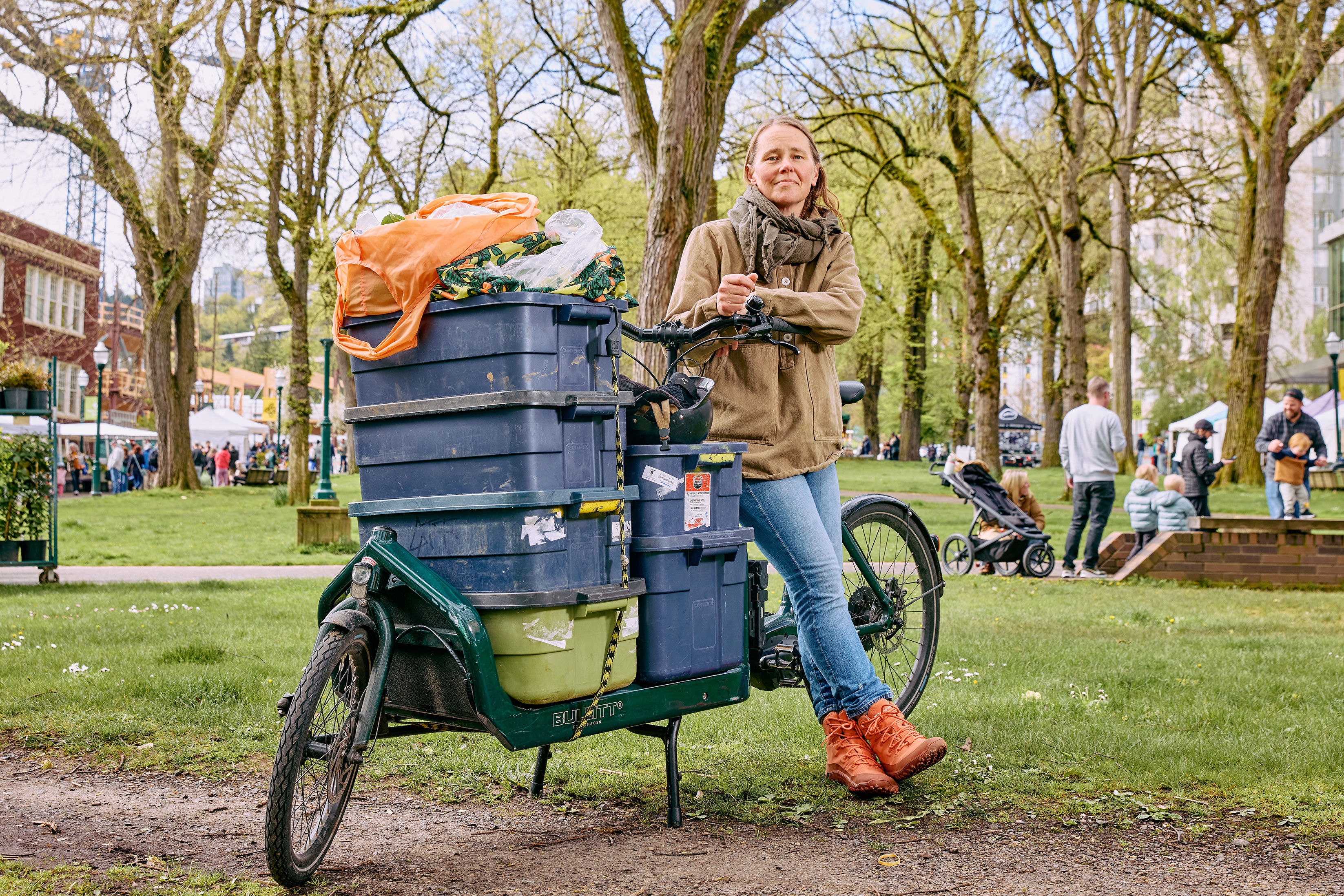Portland to Patagonia: The Long (Long, Long) Road South
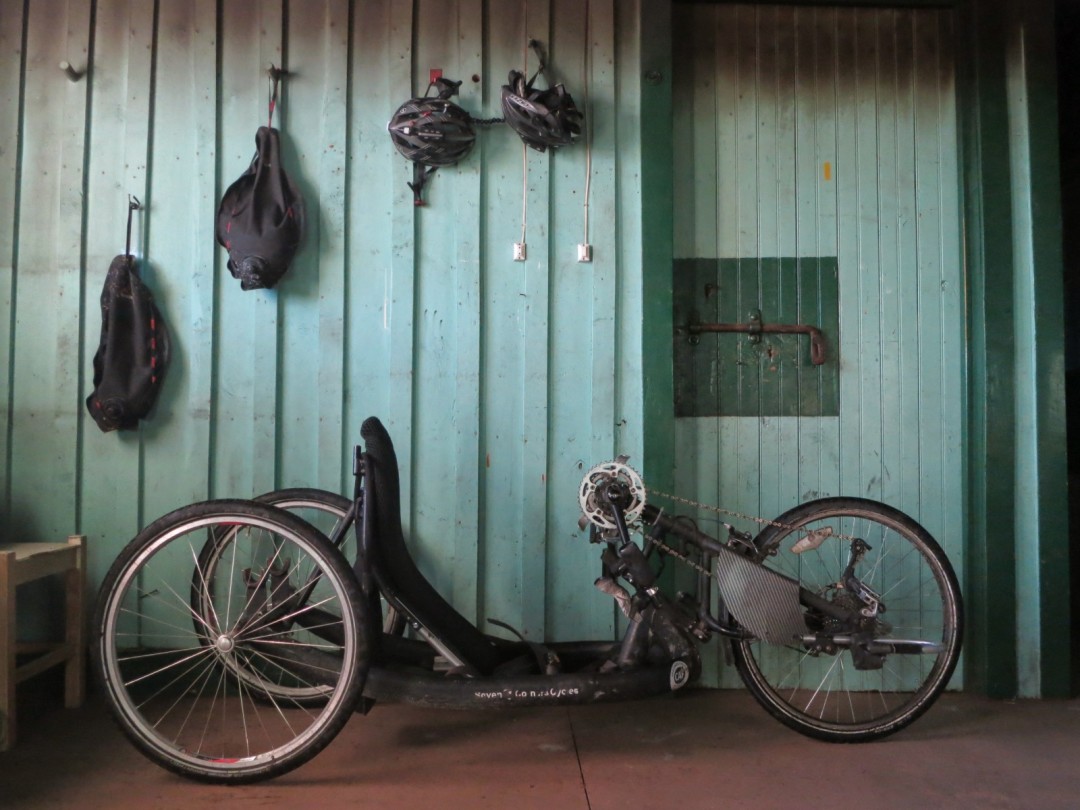
Handcycles are extremely specialized and expensive pieces of equipment, often costing more than $5,000. Pictured is McBride’s handcycle, which was provided by sponsor Challenge Athletes Foundation.
Image: Seth McBride & Kelly Schwan
An old-fashioned penny-farthing briefly interrupted my conversation with Kelly Schwan and Seth McBride as we all paused to ogle the bike, Schwan commenting on its ludicrous height (“how’s he going to stop?”) and McBride mentioning a cross-country penny-farthing cycling tour completed a century ago, on dirt roads.
It seems fitting that the two would take interest: about a year ago, the couple completed their own remarkable cycling tour, from their home in Portland to the southernmost tip of South America. However, what made their long journey notable wasn’t the perplexing height of their bikes, but the arm-powered handcycle used by McBride—the first-ever quadriplegic cyclist to have completed that transcontinental expedition.
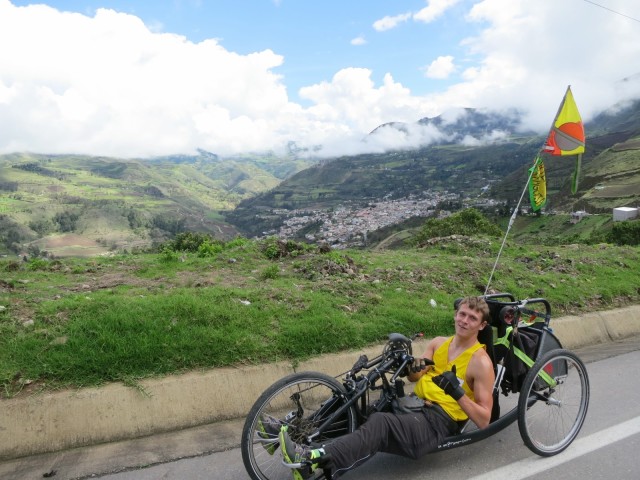
McBride stops for a picture during a steep climb in Southern Ecuador.
Image: Seth McBride & Kelly Schwan
A 2001 skiing accident left McBride with a debilitating spinal injury—but it didn’t put an end to his athletic pursuits. It merely adjusted them, as he switched to wheelchair rugby (still a full-contact endeavor that “retains the spirit of the sport”) and biked on a handcycle propelled by McBride’s considerable upper body strength.
The couple’s Portland-to-Patagonia trip—which led National Geographic to name them “Travelers of the Year” in 2013—took Schwan and McBride 315 days to complete, and was funded entirely by personal savings, individual donations, and fundraising campaigns. Though they received gear and support from companies like CamelBak, Seven Corner Cycles, Challenge Athletes Foundation, ADAPT Training, and Box Wheelchairs, Schwan and McBride had no on-site support crew throughout the expedition—it was just them, their cycles, and a 150-pound trailer of gear that Schwan pulled behind her bicycle. McBride, also a freelance writer, wrote about their “Long Road South” on his blog, hoping to “raise awareness for the importance of daily physical activity for all, regardless of situation or ability.”
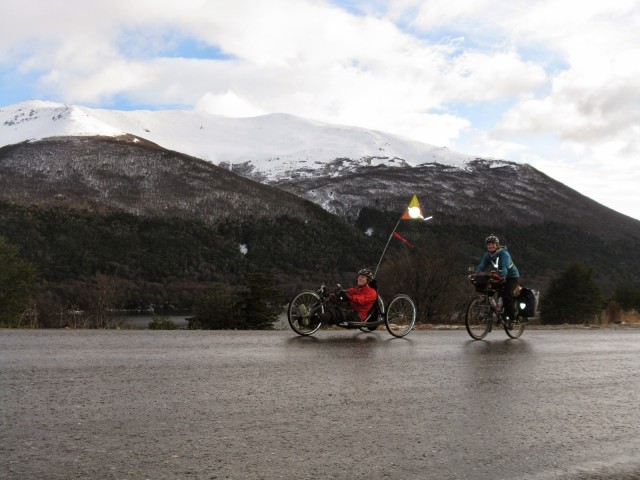
Schwan & McBride in Ushuaia, Patagonia
Image: Seth McBride & Kelly Schwan
The couple seem exceptionally suited for this particular feat: McBride is a medal-winning Paralympian (gold in 2008, bronze in 2012) who plans to start an adaptive travel/fitness magazine, and Schwan is an occupational therapist with a passion for intense cycling workouts. They met in 2005 through mutual involvement (he was an athlete, she was staff) in Paralympic wheelchair rugby, with developmental Team USA in Rio de Janeiro. They started dating two years later, and began traveling and cycling together. After a month-long cycling tour through Ireland in 2009, they started thinking about going on a more extended adventure, and soon the Long Road South emerged on their shared horizon.
The goal was to cycle from their home in Portland to Patagonia, Argentina. The year leading up to the 10,000 mile journey required skills of both athleticism and foresight: “we did something to plan every single day, whether it was training or hosting an event or interviews,” says Schwan. “Buying maps, and research, research, research.”
McBride, who has Type 1 Diabetes, also had to figure out how to keep his insulin at a stable temperature throughout the constantly shifting climates they would encounter. After collaborating with his doctor, McBride decided to keep his insulin inside an insulated Klean Kanteen and occasionally poured cool water over it—a technique that proved reliable throughout the trip.
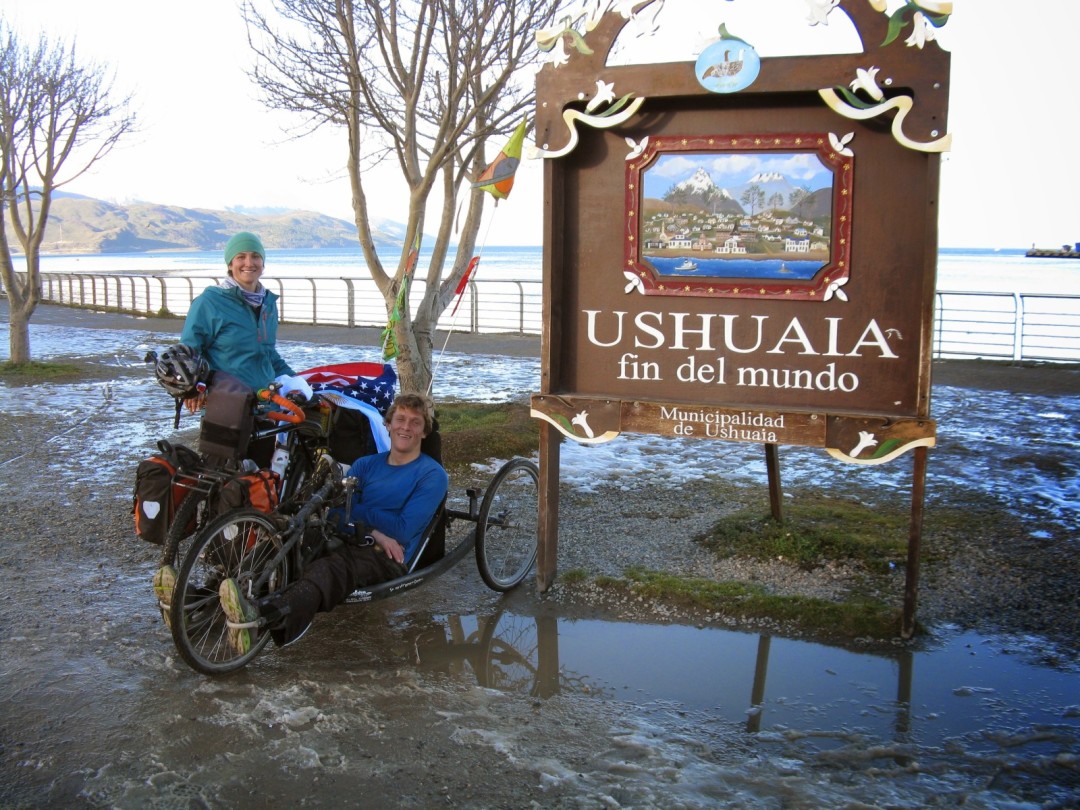
Image: Seth McBride & Kelly Schwan
“The planning and whatnot was probably the hardest part of the trip,” says McBride. “It was like anything in life where once you actually start it’s much easier and more manageable than you had ever realized.”
Schwan and McBride largely followed the coastal highways through Oregon/California and then the PanAmerican Highway, a fairly established route that sees a moderate amount of cycling traffic. They did adjust their route at times, due to twisty roads and low visibility on the Oregon Coastal Highway, and dangerously hot and humid conditions in Mexico and Colombia. Dehydration posed a particular danger to the duo because McBride doesn’t sweat as a result of his disability, which can lead to difficulty with regulating internal body temperature. The two also struggled with bodily fatigue: “Just go for a 50 mile bike ride every day for 8 days, and don’t come home at the end but instead set up camp. Every single day,” says Schwan. “That was...we were tired.”
Schwan and McBride left Portland in September and reached the Southern hemisphere ahead of schedule—meaning that they entered Argentina in the dead of winter. The pair had decided en route to go all the way to the Ushuaia, the southernmost city in the world. Because they had initially planned to end their journey in Northern Patagonia, they were entirely unprepared for the frigid temperatures that would mark their time in the Southern region of Patagonia. Their sleeping bags (which they had used every single day for several months, and were consequently wearing down) were rated for 30-degree weather, but they were sleeping in temperatures below 20.
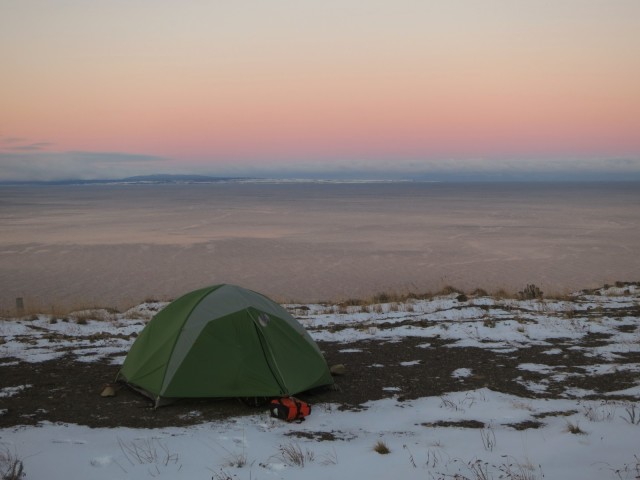
Schwan pulled a trailer full of gear, including their tent, so that the couple could set up camps like this one in Argentina.
Image: Seth McBride & Kelly Schwan
“We luckily had family coming down to meet us and we were able to get supplies that way,” says McBride. His mother and sister flew to meet the couple in northern Argentina with extra bags and alpaca blankets so the cyclists could safely continue on to Ushuaia. “We were sleeping with all of our layers on, with a blanket, an extra sleeping bag inside our sleeping bag, and a down quilt,” says Schwan. “It was cold.” Despite the challenges, Schwan and McBride reached the very Southern tip of South America in August, 2014.
Both resumed their professional careers after returning from Patagonia, with a newfound appreciation for a daily routine that doesn’t involve the packing and unpacking of every necessary belonging: “The big thing is just appreciating the little things about living in a town like Portland, where you have access to good food all the time,” says McBride. “It all seems very luxurious to me now.”
Currently a student in Portland State’s Creative Nonfiction MFA program, McBride is navigating the publishing process as he works on a proposal for a book about the trip. Schwan, who returned to work at the same Level 1 trauma hospital as she did before the trip, will speak at TEDxMtHood on May 2.
Schwan and McBride, who have been together for eight years, are also in the process of preparing for their next big adventure: getting married in June: “That’s the big planning on our horizon,” McBride says.

